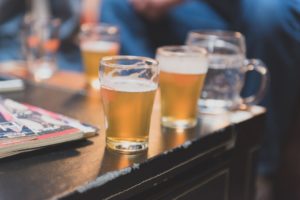At the Workplace Wellbeing Show, Samantha Francis, Training Consultant at SYNLAB, explained the current trends within illegal drug use, and what businesses need to do to prevent it.
What drugs are people taking?

The way we’re consuming drugs has changed, with so-called ‘legal highs’ readily available to consumers, despite the blanket ban recently imposed by the government. Others, such as the psychoactive substance ‘monkey dust’, fall outside the Misuse of Drugs Act 1971, making them difficult to combat.
A particularly potent emerging problem is Fentanyl. This incredible strong drug is usually used to treat severe pain, but its most dangerous form is fifty times stronger than heroin.
Strong drugs are increasingly being prescribed as painkillers, or to treat depression and anxiety. While these can be incredibly effective, in some cases they lead to dependency. Pregabalin and Gabapentin, usually used against epilepsy, anxiety and pain, were named a Class E drug in April this year, owing to their addictive properties.
It’s important for wellbeing professionals to understand the impact of the most common drugs. Cannabis is largely harmless when used recreationally, and CBD oil – which contains none of the psychoactive component, THC – is available over-the-counter in shops like Holland & Barrett.
Alcohol, meanwhile, is a far bigger threat. There 589,101 dependent drinkers in the United Kingdom, and lost productivity due to alcohol costs the British economy more than £7 billion annually. Furthermore, 25% of Brits say that drugs or alcohol have affected them at work, with 23% saying they experience reduced productivity as a result. In total, 167,000 workdays are lost to alcohol each year.
How can companies reduce drug and alcohol problems?
When 27% of employees say drug misuse is a problem at work, getting your company’s drug and alcohol policy right is critical – not just to reduce absences and increase productivity, but to protect your brand and employees from bad publicity, too.
You can start by setting out the clear aims and scope of your drugs policy, deciding who it will cover and what type of testing you want to do. A good policy acts as a preventative measure by identifying drug takers who might fall prey to dependency down the line.
It should also seek to educate and train staff and managers, ensuring all your employees know the value of drug testing and the aims of prevention, and understand the support networks available to them.
Tests can be carried out at random, and should primarily be focused on safety-critical roles, and ‘integrity-driven’ roles such as industry collectors, laboratory analysts and senior executives whose reputation and position would suffer from a drug dependency issues.
But testing can also be used in response to an incident. For instance, if a factory truck reverses into someone, the driver and the victim should be tested for drugs and alcohol, provided there is reasonable suspicion. Across the United Kingdom, 57% of drivers tested following a traffic accident produced a positive result.
How can SYNLAB help?
SYNLAB itself can help deal with workplace drug addiction. It can implement end-to-end workplace drug and alcohol testing, help companies with internal policy review, and offer training, education and support to employers and employees alike.
With the rise in addictions to prescription drugs and the increasing normalisation of illegal substances, drug testing is more important than ever. Getting your prevention strategy right can reduce absenteeism, improve productivity and protect your business from reputational damage.
This article was originally published on the Facilities Show Blog.
Why should you subscribe to the SHP newsletter?
Do you want the very latest health and safety news, product launches, job listings and expert opinions sent straight to your inbox daily?
The SHP newsletter is essential reading – sign up today to get your hands on all this!


